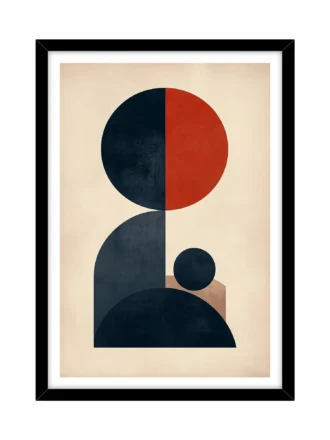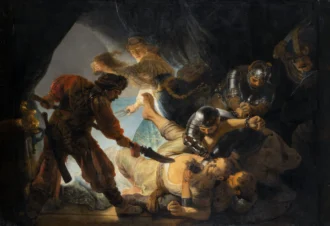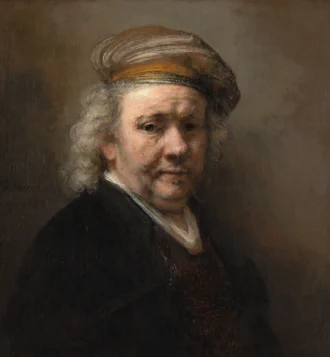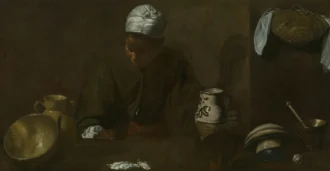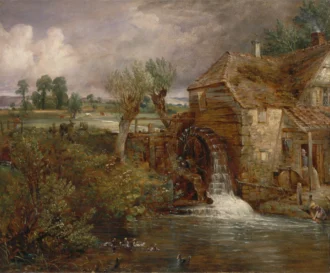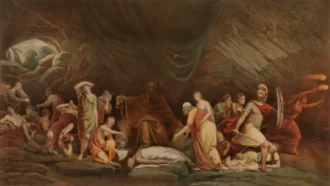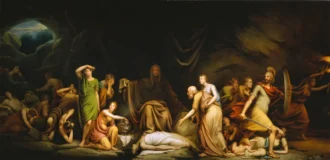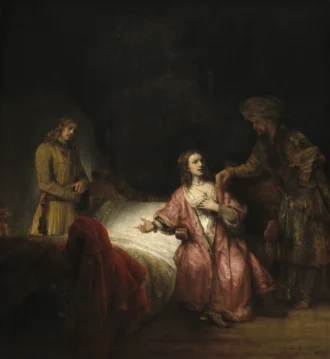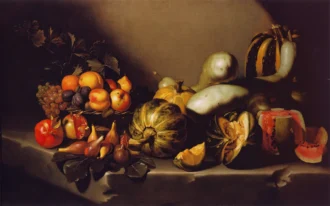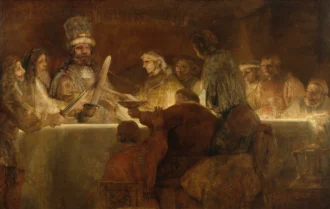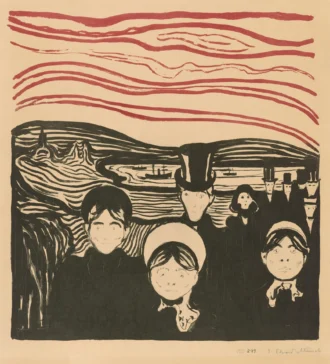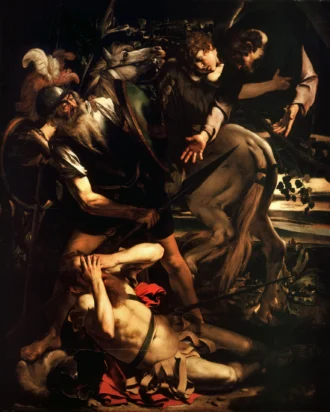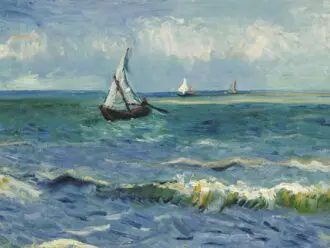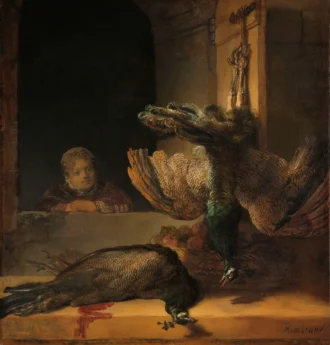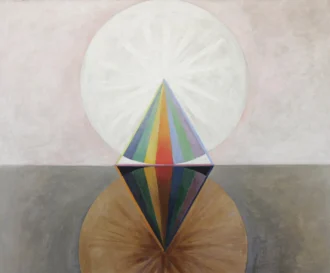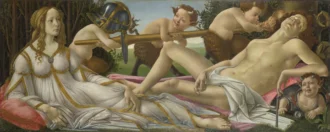Showing all 16 results
Boho minimalistic abstract art
This sleek artwork merges geometric precision with a striking color palette of black, red, and beige. Its simplicity radiates sophistication, making it the perfect centerpiece for any interior. An ideal choice for those who appreciate modern abstract design. Available in various sizes, you can choose from framed artwork designs to suit your space and taste.
The Blinding of Samson
Rembrandt van Rijn’s The Blinding of Samson (1636) is a stunning Baroque masterpiece that powerfully captures the climactic moment of betrayal and violence from the biblical story of Samson. Regarded as one of his most intense works, it exemplifies his remarkable use of chiaroscuro, evoking the emotional turmoil of the narrative while holding significant monetary value in the art market. Read more on the artwork here.
Self-Portrait (1669) of Rembrandt Van Rjin
The Self-Portrait of 1669 by Rembrandt van Rijn is a profound exploration of self-representation and aging, created just months before his death. This artwork is a testament to Rembrandt’s artistic genius, capturing the vulnerability and strength of his character, and holds significant monetary value as a crucial example of late Dutch painting. Read more on the artwork here.
Kitchen Scene (1618-22)
Diego Velázquez’s Kitchen Scene captures the essence of 17th-century domestic life and themes of social hierarchy, showcasing the artist’s early mastery during his Seville period. This artwork holds monetary significance, highlighting Velázquez’s evolution as a prominent figure in art history, with multiple valued versions across major galleries. Read more on the artwork here.
Parham Mill, Gillingham
Parham Mill, Gillingham is a lesser-known work attributed to John Constable, exemplifying his affinity for the English countryside. Although not among his most recognized pieces, it reflects his mastery in capturing light and atmospheric effects in landscape painting, which have positioned it within art circles as a captivating study of rural life. Read more on the artwork here.
The Court of Death
A masterful oil painting by Rembrandt Peale, The Court of Death is a profound moral statement from 1820 that showcases the inevitability of death across different social classes. Now housed in the Detroit Institute of Arts, it represents both an artistic milestone for Peale and a significant commentary on human existence. Read more on the artwork here.
The Court of Death I
Created in 1820 by Rembrandt Peale, The Court of Death is a monumental painting that explores the universal theme of mortality, drawing inspiration from the poem by Bishop Beilby Porteus. This significant work not only showcases Peale’s ambition in historical painting but also holds monetary significance in the art world as a reflection of early American art’s moral undertones. Read more on the artwork here.
Joseph Accused by Potiphar’s Wife
Joseph Accused by Potiphar’s Wife is a captivating 1655 painting by the renowned Dutch artist Rembrandt van Rijn. This remarkable work interprets a pivotal moment from the Book of Genesis, blending intricate storytelling with emotional depth, and showcases Rembrandt’s mastery of light and shadow. This piece, housed at the National Gallery of Art, adds significant value to the art world for its exploration of moral complexities surrounding false accusations. Read more on the artwork here.
Still Life with Fruit (circa 1603)
Michelangelo Merisi da Caravaggio’s Still Life with Fruit on a Stone Ledge (circa 1603) showcases his mastery of Chiaroscuro and remains a pivotal reference point in the history of still-life painting. Highly valued within the art market, this noteworthy work reflects the complex interplay of light and texture, illustrating Caravaggio’s innovative approach to composition. Read more on the artwork here.
The Conspiracy of Claudius Civilis
A striking masterpiece by Rembrandt van Rijn, The Conspiracy of Claudius Civilis brilliantly captures a pivotal moment in Dutch history. Created between 1661-1662, this artwork not only showcases Rembrandt’s formidable talent but also stands as a symbol of resistance and national identity, making it a treasured piece in art history. Read more on the artwork here.
Angst (1896)
Edvard Munch’s Angst (1896) masterfully encapsulates collective anxiety through its emotive composition and innovative techniques. This artwork is not only significant for its artistic depth but also reflects Munch’s enduring exploration of existential themes, solidifying its place in the art world as a classic of Expressionism. Read more on the artwork here.
The Conversion of Saint Paul (ca. 1600)
Caravaggio’s The Conversion of Saint Paul. created around 1600-1601, depicts a transformative moment in Christian history. The artwork captures the striking use of chiaroscuro and dramatic tension that encases the scene, marking its significance in the Baroque era of painting. This painting’s monetary value has been deeply affected by its rich backstory and the reverence for Caravaggio’s pivotal role in art history. Read more on the artwork here.
Seascape at Saintes-Maries
Bring the essence of the Mediterranean coast into your home with Seascape at Saintes-Maries, Van Gogh’s vibrant portrayal of the sea and sailboats near the fishing village. Through bold blues and lively brushstrokes, he captures the movement of waves and the breezy air of Saintes-Maries. Own a masterpiece that reflects Van Gogh’s fascination with nature’s energy and the beauty of seaside life. Read more on the artwork here.
Still life with peacocks
Discover Rembrandt van Rijn’s exceptional still life featuring life-sized peahens, an intriguing representation of his less extensive but fascinating foray into this genre. Renowned for his mastery of light and shadow, this painting stands as a remarkable exploration of realism that elevates the study of natural forms in art, showcasing its significance in the evolution of still life. Read more on the artwork here.
Group IX/SUW No. 12, The Swan No. 12 (1915)
Created in 1915, ‘Group IX/SUW No. 12, The Swan No. 12’ is a pivotal painting by Swedish artist Hilma af Klint, recognized for its pioneering visionary and abstract qualities. This artwork is significant not only for its innovative use of color and form but also for its early exploration of spiritual themes, placing af Klint at the forefront of modern art movements. Read more on the artwork here.
Venus and Mars (1485)
“Venus and Mars” is a captivating painting by Sandro Botticelli, notable for its rich symbolism and depiction of love’s triumph over war. Created around 1485, this Early Renaissance masterpiece combines mythological themes with intricate artistic techniques, illustrating Botticelli’s profound understanding of both ancient and contemporary cultural influences. The artwork is highly valued in the art world, both for its historical significance and its aesthetic appeal. Read more on the artwork here.




